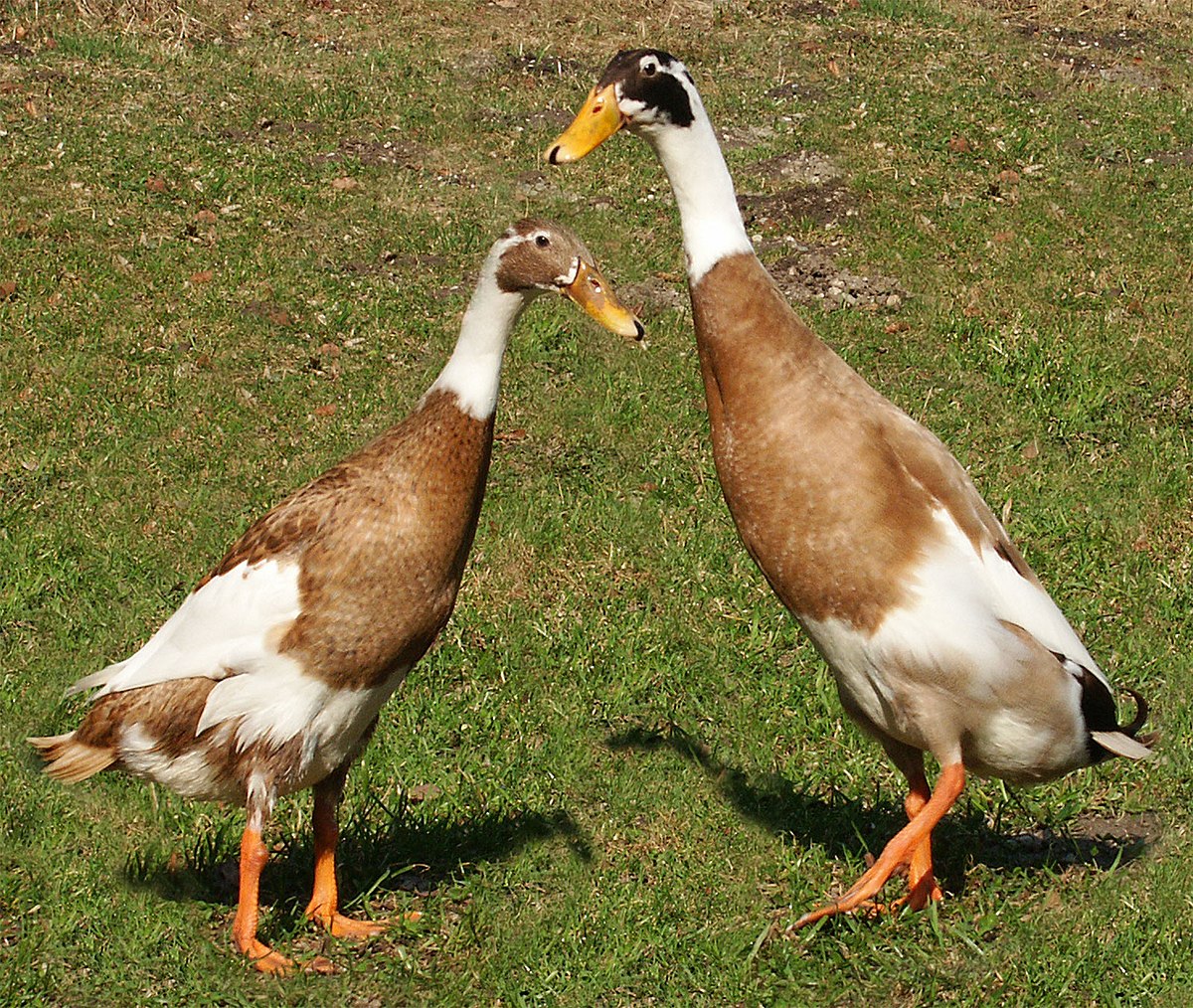The Indian Runner duck stands out as an uncommon and remarkable breed within the realm of domestic ducks. Originating from the Indian subcontinent, this distinctive breed has also been found on the Indonesian islands of Bali, Java, and Lombok, adding to its mystique and allure. In this article, I am going to talk about Indian Runner Duck eggs, colors, lifespan, house, running, chicks, care, etc.
Delving into the annals of history, we find the Indian Runner duck leaving its mark, evidenced by ancient Javan Temple carvings. These historical artifacts point to the existence of Indian Runner ducks in Indo-China over two millennia ago, suggesting a rich tradition of duck rearing in the region spanning centuries.
Indian Runner Duck: Profile, Facts, Lifespan, Size, Eggs, Care
Originally found on the Indonesian islands of Lombok, Java, and Bali, Indian Runner Ducks were historically used as egg-layers and meat sources. They gained recognition for their unique ability to be “walked” to market, showcasing their adaptability and utility in various agricultural settings. The Indian Runner duck emerges as a fascinating breed, blending historical significance with distinctive physical attributes and behavioral traits. Its journey from the Indian subcontinent to the Indonesian islands speaks to its enduring legacy and widespread appeal among enthusiasts of domestic poultry breeds.
| Attribute | Details |
|---|---|
| Breed Name | Indian Runner |
| Other Name | Penguin Ducks, Bottle Necks, Runner Ducks |
| Breed Purpose | Eggs, Organic Pest Control |
| Special Notes | Active, Docile, Excellent Foragers, Excellent Layers |
| Breed Class | Light |
| Broodiness | Poor |
| Weight | Drake: 1.6 to 2.3 kg, Duck: 1.4 to 2 kg |
| Climate Tolerance | All Climates |
| Egg Color | White, Greenish-White |
| Egg Size | Large |
| Egg Weight | 65 to 80 grams |
| Egg Productivity | Excellent |
| Flying Ability | Poor |
| Rarity | Common |
Summary of Indian Runner Duck Profile
Breed Name: Indian Runner
Other Names: Penguin Ducks, Bottle Necks, Runner Ducks
Breed Purpose: Eggs, Organic Pest Control
Special Notes: Active, Docile, Excellent Foragers, Excellent Layers
Breed Class: Light
Broodiness: Poor
Weight: Drake: 1.6 to 2.3 kg, Duck: 1.4 to 2 kg
Climate Tolerance: All Climates
Egg Color: White, Greenish-White
Egg Size: Large
Egg Weight: 65 to 80 grams
Egg Productivity: Excellent
Flying Ability: Poor
Rarity: Common
Analysis of Indian Runner Duck Characteristics
The Indian Runner duck is a versatile breed prized primarily for its exceptional egg-laying abilities and proficiency in natural pest control. Renowned for their activity and docility, these ducks are excellent foragers, capable of thriving in various climates. Despite their poor broodiness and flying ability, they compensate with their prolific egg production, with eggs typically being large and of excellent quality. Overall, the Indian Runner duck represents a common yet invaluable addition to poultry farms and homesteads, offering both utility and companionship to those who raise them.
A Common Phenomenon: Misnaming in Poultry History
The misnaming of the Indian Runner duck is not an isolated occurrence but rather a common phenomenon in the annals of poultry history. Similar instances of misnaming have been documented with other breeds of waterfowl imported into America and Europe. For example, the African goose, despite its name, is not native to Africa, while the black East Indian duck hails not from India but from Southeast Asia. Even the Muscovy duck, often associated with the Russian capital, has no true connection to Moscow. These misnomers serve as reminders of the complexities of historical record-keeping and how cultural perceptions and geographic associations can influence the naming of domesticated animal breeds.
Other Recommended Articles
- Barred Owl Description and Profile
- Great Horned Owl Description, Facts, and Profile
- Barn Owl – Food | Lifespan | Flying | Habitat | Facts
- Snowy Owl – Bird | Size | Fun Facts | Adaptation | Baby
- Snowy Owl Adaptations – What and How
- Auk Bird Description, Facts, and Nature
- Little Auk or dovekie (Alle alle) Description
- Black guillemot (Cepphus grylle) Description
- Pacific Gull (Larus pacificus) Description
- Ross’s Gull (Rhodostethia rosea) Description
- Black Oystercatcher (Haematopus bachmani) Facts
- Golden Laced Wyandotte Facts and Care Guide
- Taking Care of Baby Chicks – A Handy Guide
- A Complete Chicken Care Guide for Beginner
- American herring gull, or Smithsonian Gull Facts
- Elegant Tern (Thalasseus elegans) Description
- Forster’s Tern (Sterna forsteri) Description
- Thayer’s Gull (Larus glaucoides thayeri) Facts
- Ring-billed Gull Description and Facts
- Large white-headed gulls (Larus) Description

